Related Tags
40 Ways To Sound Better At Home
We all play at home, but most of us can’t do so with our amps cranked – here are 40 ways to keep it down and still sound great.

Sleeping children, grumpy flatmates, wall-thumping neighbours, easily traumatised cats… there are plenty of reasons why the modern home is no place for cranking a 100-watt stack.
Luckily, these days there are also plenty of reasons why you don’t have to. Whether you’re rehearsing, recording or jamming along to daytime TV theme tunes in front of the telly, we’ve selected the best ways for you to keep it down without sacrificing inspirational tone…
Part One: Taming A big amp
Maybe there’s only room for one amplifier in your life, and it has to be loud enough for gigs. Here’s how you can you miniaturize that massive tone for the home…
Attenuators and dummy loads
This whole feature could have been five words long – ‘Turn down the master volume’ – but for two reasons. One, many of our favourite amps don’t have a master volume; and two, MV amps often sound a bit flat when they’re backed off, because the signal is being squished down before those big power valves can get stuck into it. This is why the gods were kind enough to bless us with attenuators, which sit between an amplifier’s output stage and its speaker(s).
Some of them can be switched to zero, so that no sound gets through at all. This is ideal if you’re a really, really bad guitarist… but it also has a more serious use for recording. In this mode an attenuator is working as a dummy load, protecting your amp’s output transformer (valve amps always need to be plugged into something) while allowing you to take a line-level DI signal to your audio interface.
Resistive attenuators simply convert sound into heat, while reactive ones are designed to preserve a speaker’s varying impedance at different frequencies for a truer response. However, they’ll all change the character of your tone slightly – apart from anything else, speakers don’t sound the same when they’re not being pushed so hard.

1. Tone King Ironman II Mini
£395, toneking.com
The Ironman is fitted as standard to all Tone King amplifiers, and the Mini version – suitable for any amp up to 30 watts with an eight-ohm output – is also available as a standalone unit. This is a reactive load, and here’s the really clever bit: in addition to a six-step attenuation control, it has a ‘solo’ footswitch so you can bump things back up again for your ‘Ladies and gentlemen, on lead guitar…’ moment.
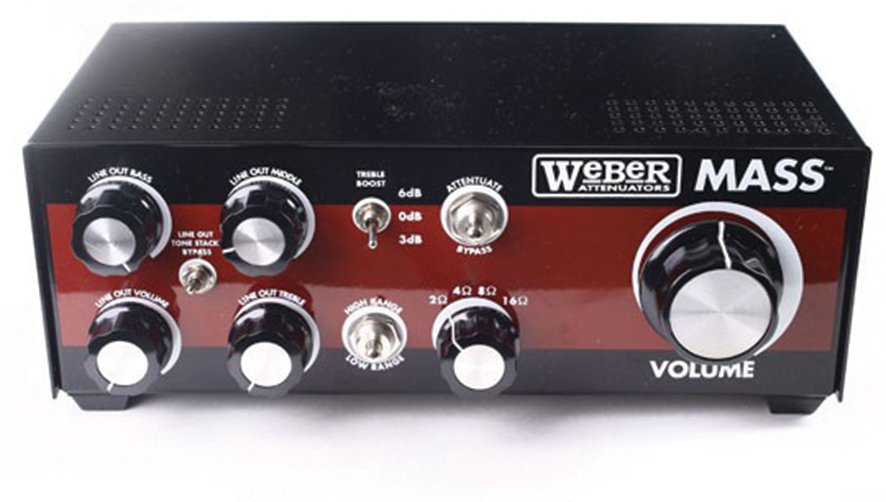
2. Weber Mass
$260, tedweber.com
Here’s a reactive attenuator that wears a cunning disguise so as not to disrupt the complex relationship between amp and speaker. The Mass uses the moving parts of an actual speaker to make your amp think it’s talking directly to the real thing, not just a go-between. It has switchable impedance and treble boost, and can be turned down to complete silence for using only the line output.
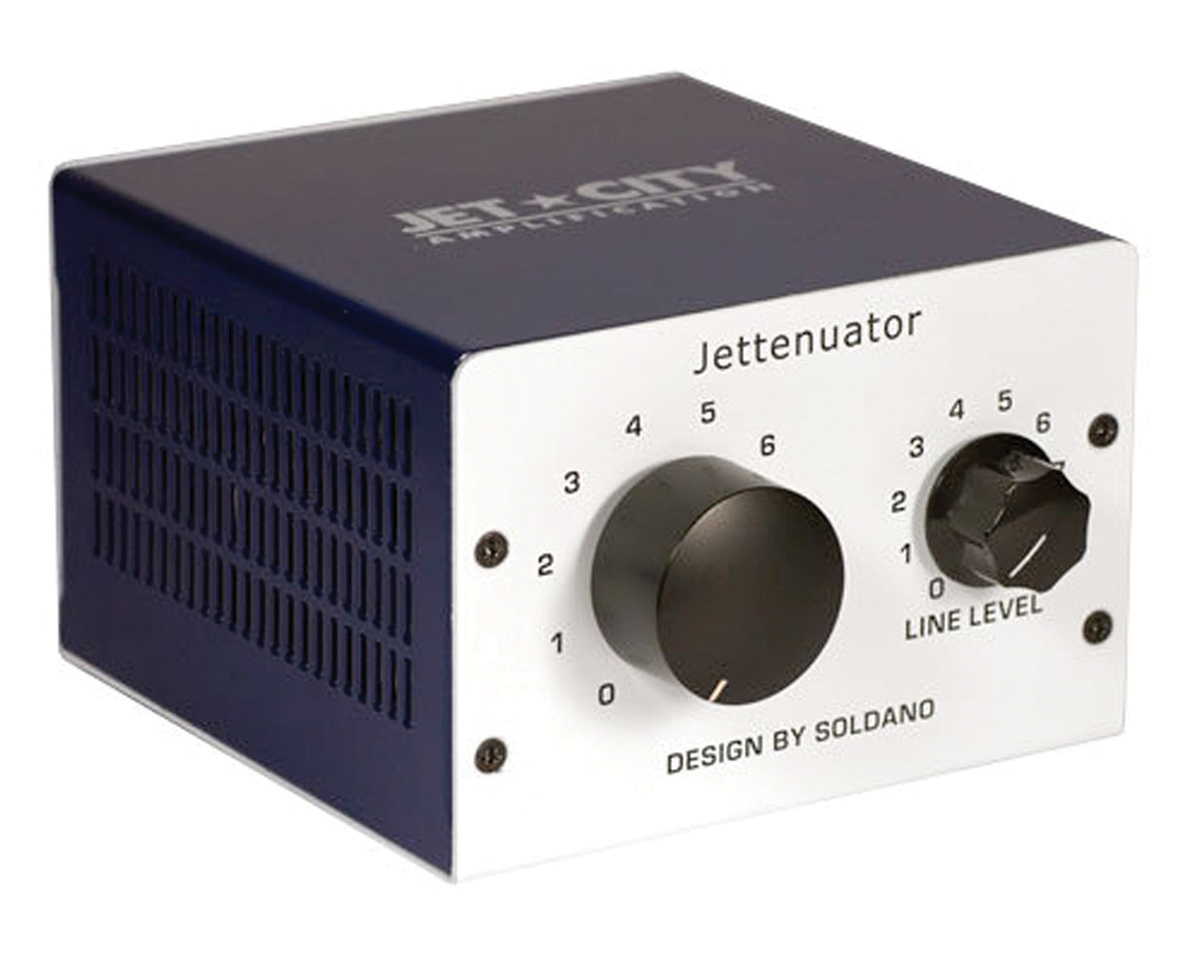
3. Jet City Jettenuator
£115, jetcityamplification.com
We’re taking a drop in price here, but the words ‘designed by Mike Soldano’ should reassure you that this isn’t going to be junk. The Jettenuator is basic in the sense that it’s built around an L-pad, a simple resistor-based device, but it’s cleverly thought out. There are three inputs – four, eight and 16 ohms – but only one speaker output, and that doesn’t care what impedance it comes up against. It also has an XLR output with mic simulation and a standard line out.

4. Fryette Power Station 2
£699, fryette.com
The Fryette is a 6L6-powered 50-watt power amp in its own right. So yes, if you were wondering why this unit is so much more expensive than the others listed here, that’s why. It’s first of all a reactive attenuator and dummy load, but the re-amping feature means it can also – somewhat contrary to the whole point of this article it must be said – turn a quiet amp into a loud one!
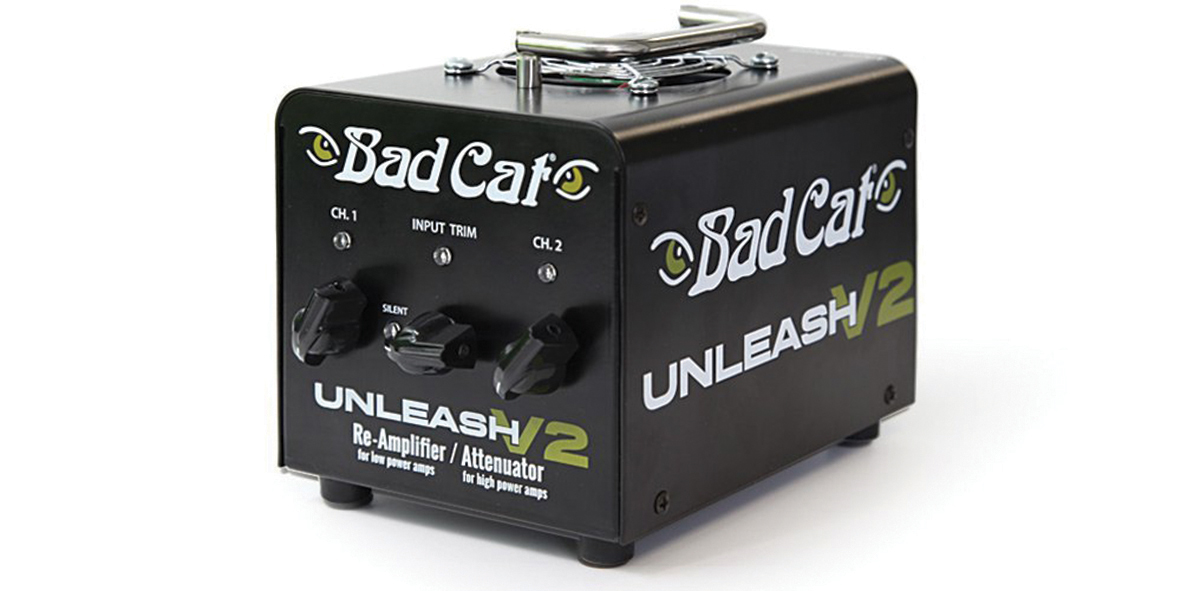
5. Bad Cat Unleash V2
£519, badcatamps.com
This switchable-impedance attenuator and load box is another that also does re-amping, courtesy of a 100-watt solid-state power stage. We’re not in love with its sound when used as a simple level-dropper, but its more satisfying amp-boosting skills make it a potentially useful multi-tool.
6. Elevenator
£40 approx, bit.ly/diyattenuator
Resent the idea of handing over money to a stranger in order to clamp down on your sonic fun? Then why not do your own clamping instead! Designed by our own Huw Price for a workshop feature in the world’s greatest guitar magazine – whaddaya mean, which one? – this simple but effective DIY box uses an L-pad and includes a three-way treble switch to keep things sparkly. Just follow the link above for assembly instructions.
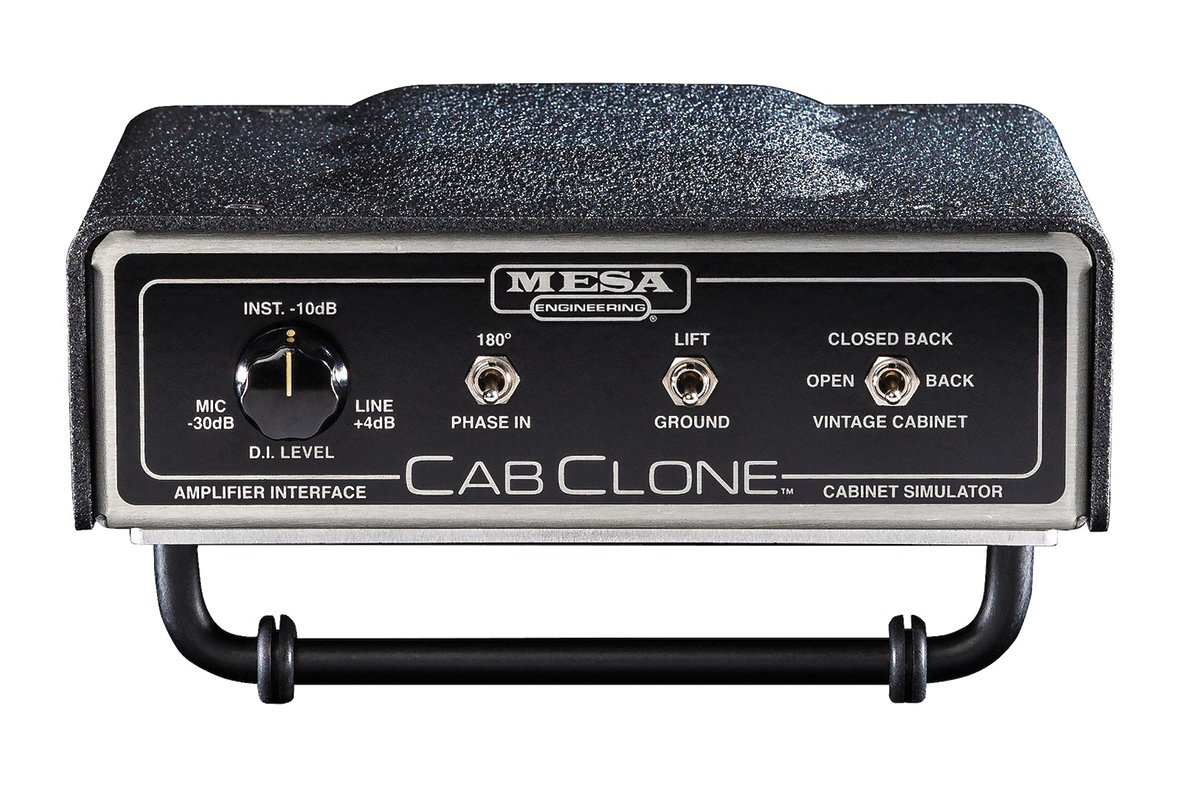
7. Mesa/Boogie CabClone
£239, mesaboogie.com
Boogie’s little box has a ‘thru’ output for a speaker cabinet, but it really exists to let you leave the big old thing at home. It’s a dummy load and cab simulator, for plugging your amp head directly into a recording interface or PA. There’s no switchable impedance, so you’ll need to pick the right version to match your rig, but you do get three flavours of simulation – open-back, closed-back and ‘vintage’ – plus a headphone output for silent 3am wig-outs.
8. Eminence Reignmaker & Maverick
£123, eminence.com
The secret of the speakers with a big dial on the back is a technology called ‘flux density modulation’, which doesn’t facilitate time travel but does change the strength of the magnetic field acting on the cone. So you’re actually making the speaker less powerful, rather than feeding it with a weaker signal. The snag? There are only two models to choose from, and if neither of them has the sound you’re after, you’re stuffed.
Speaker cab impulse responses
So you’ve succeeded in quietening your big amp down, or silencing it completely, but now you want that full-scale mic’d cab sound for recording. Software to the rescue!
9. Redwirez
from £free, redwirez.com
Rather than just using EQ filtering to make a DI signal sound more realistic, an impulse response (IR) samples the sonic ‘fingerprint’ of a real cabinet recorded in a real room. This can then be downloaded as a plug-in for your DAW. We’re directing you straight to Redwirez here for the simple reason that it offers an irresistible way to try out the IR concept: a free download of a Marshall 1960A with 17 mics (in assorted positions) to choose from. We tried it, and the results were refreshingly spacious and lifelike.
10. Celestion Digital Download
from £free, celestionplus.com
As the world’s most famous manufacturer of guitar speakers, you might expect Celestion to be bubbling over with rage at the advent of IRs – but it’s responded by making a bunch of its own. All the big names are available, including the Greenback and the Blue, and there’s one free download using a single Vintage 30 in a closed-back cab. We tried this one too, and found it scarily convincing.
One-box solutions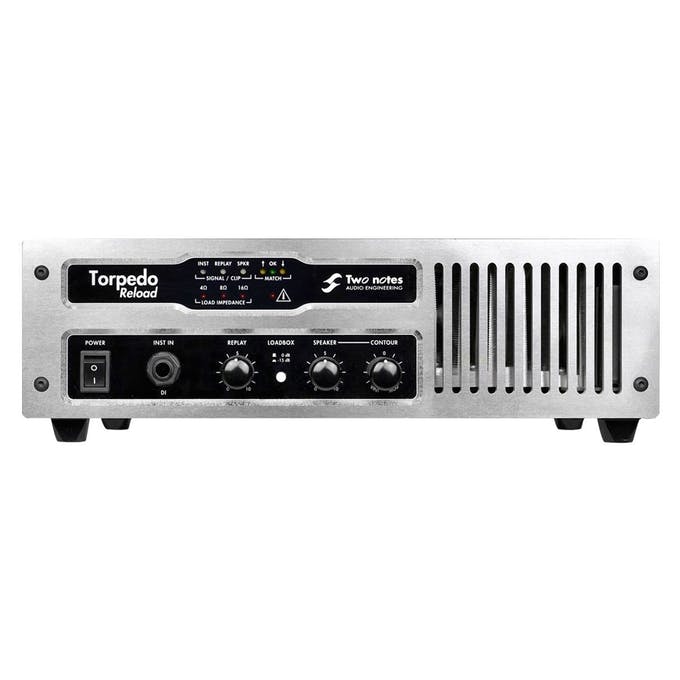
11. Two Notes Torpedo Reload
£599, two-notes.com
Two Notes is a French firm based so close to the sunny Mediterranean it’s a wonder their staff ever bother to do any work at all – but we’re glad they do. The Torpedo Reload crams a fair chunk of the company’s all-round cleverness into one handy unit: it’s a reactive attenuator and load box with switchable impedance that also offers access to a whole bunch of impulse responses via the Torpedo WoS III plug-in.
Power scaling amps
There’s a trend for amp makers to offer power scaling as a less tone-sucky alternative to a master volume. This involves reducing the voltage applied to the output stage, which in turn reduces the wattage you’ll get coming out of it. Put in fewer eggs, and you get a smaller omelette – simple, really.
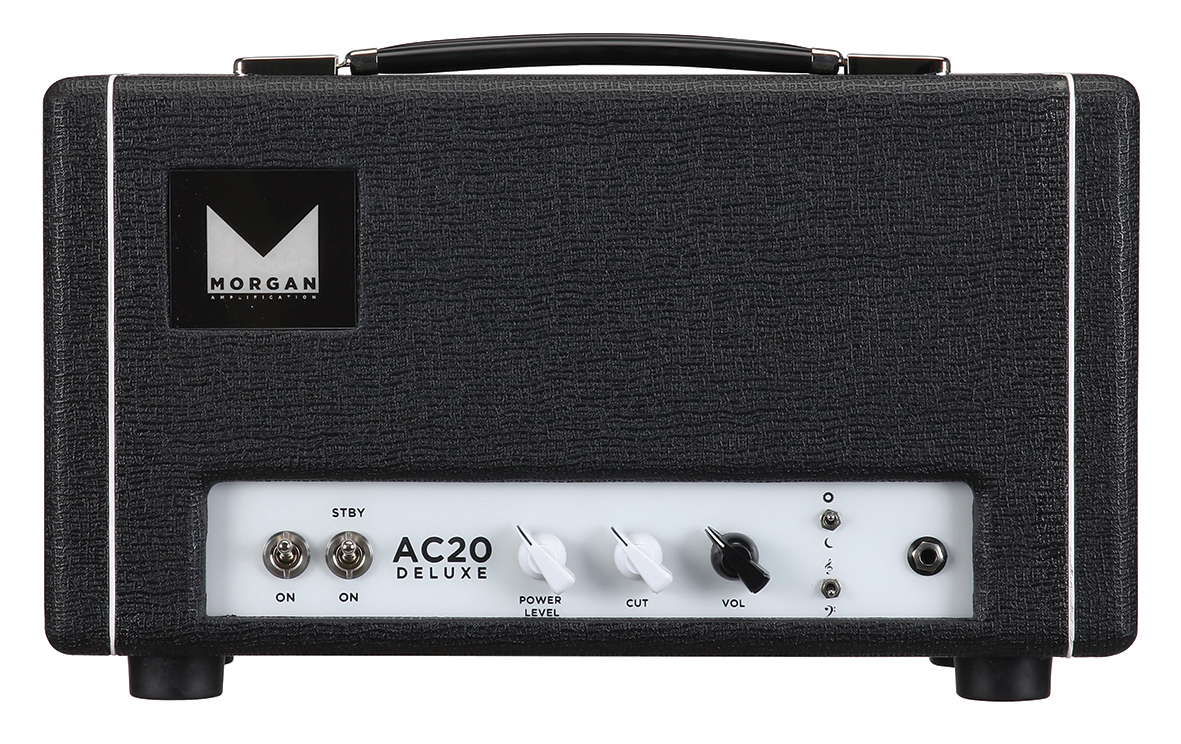
12. Morgan AC20
£1,449, morganamps.com
Has any other modern maker nailed the distinctive chiming crunch of a vintage Vox as well as Morgan? The AC20 is a simple amp, as most of the best ones are, with just three knobs – and one of those is for power scaling. It doesn’t actually get much quieter until you’ve pulled it back shy of halfway, but the AC20 never stops sounding beautifully Voxy.
13. Suhr Badger 30
£2,069, suhr.com
Maybe the word ‘badger’ doesn’t sound as silly in America as it does over here… anyway, Suhr is a deadly serious maker of guitars, pedals and amps, and its Badger models are British-voiced, cathode-biased heads with a footswitchable MOSFET boost. The power control on this EL34-fired 30-watter can take you down to a single watt, and works in conjunction with a drive knob that serves as an old-fashioned master volume. Play with them both and judge the difference for yourself.

14. Milkman Sound 5W Half Pint
£2,199, milkmansound.com
Yes, this one’s only five watts to begin with, but how many watts do you think it takes to wake up a grumpy spouse in the next room? From bitter experience, somewhat less than five. So this American boutique gem has a power-scaling control on the back panel that lets you dial it right down to a fraction of a watt. It’s a Fender Vibro-Champ type with a single 6V6 and a 12-inch Jupiter speaker.
Switchable power valves
Let’s not forget the output tubes themselves. With some amps that have four, it’s possible to simply take two of them out – but please don’t try this unless you really know what you’re doing, as it’s easily done wrong.
There are neater solutions. Some amps, such as Swart’s AST models, allow you to use 6V6 or 6L6 power valves and swap rectifier valve types for earlier break-up and compression, while Rivera, Vox and Gibson have used pentode/triode switching. Here’s one ingenious approach that takes something from both of those ideas – and another that lets you completely rebuild you output stage on the fly…
15. TAD Class A Converters
£75/pair, tubeampdoctor.com
This is a simple trick if there’s room inside your amp for some extra-tall valves. Replace your EL34s or 6L6s with a pair of these drop-in converters (aka ToneBones) and you’ll be effectively turning your 30-watter into an EL84-fired AC15 type. Just check the TAD site for amp compatibility, and make sure you choose the triode version for maximum attenuation – down to around eight watts.
16. Hughes & Kettner Triamp Mark III
£3,289, hughes-and-kettner.com
H&K’s flagship amp has a resistive attenuation control on the back panel, but much more interesting is theway it lets you hop between three different pairs of power valves just by pressing buttons on the mission control-style front panel. So you could use four KT88s for your big festival appearance, then switch over to a pair of 6L6s for home practice. Expensive? Oh, er… we hadn’t noticed…
Portable power
For a leftfield option how about a valve amp that fits under your hat?
17. Zvex Nano Head
£529, zvex.com
It’s no secret that titchy tube amps such as the legendary tweed Fender Champ can record beautifully, but there’s no need to stop there. ZVex’s Nano Head is just 4.5 inches across and pumps out half a watt of pure valve power into the smallest cab you can find (well, it’d look prettysilly on a 4×12). See also the Blackstar HT-1 and Marshall’s one-watt 50th anniversary models.
Part two: Stomp out your problems
Whether it’s plugged into your usual amp or going directly to an audio interface, the short cut to tinnitus-free tone might be at your feet…
Standard pedals
You wouldn’t buy a conventional stompbox to make your amp quieter, any more than you’d hire a drummer to make your band more intelligent. Or would you? In some cases, shrewd use of one or two pedalboard staples can help you get the sounds you want at lower levels.

18. Caroline Haymaker
£199, carolineguitar.com
How do you crunch up the perfect clean sound? The simple answer is to crank up the preamp volume… but that little nudge into the breakup zone is often just enough to turn a gentle jam into a visit from the noise police. A transparent overdrive – that is, one that’s been voiced not to colour your basic tone – is the obvious answer. The Haymaker is an excellent example of the type, allowing you to dial in just as much pure gain as you need without hitting the front end of your amp any harder than you want to.
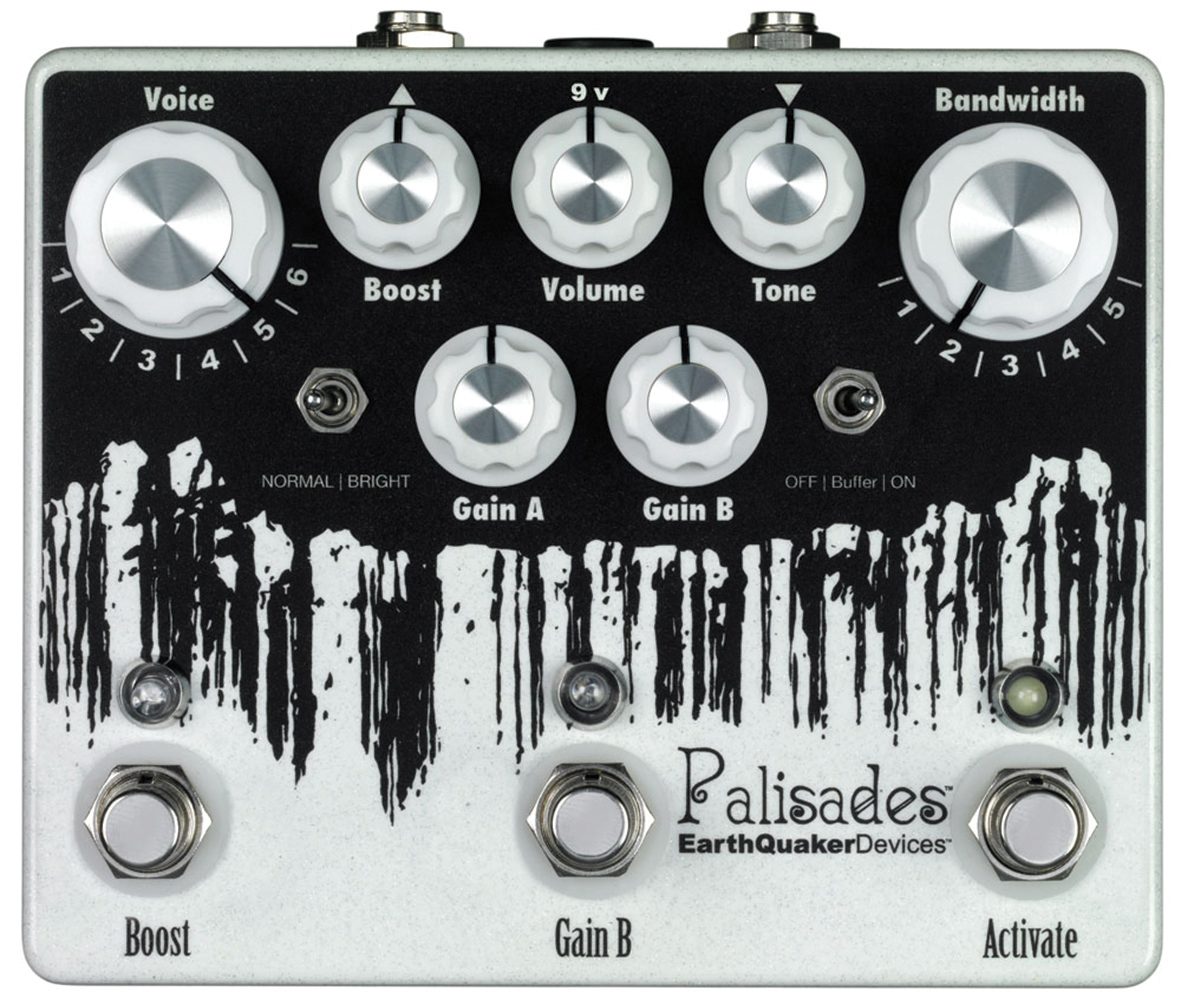
19. Earthquaker Devices Palisades
£245, earthquakerdevices.com
The combination of slimmed-down bottom end and boosted upper mids means a Tube Screamer-type will give you a more ‘compact’ overdriven tone, with lots of cut but very little low-end bloom. So if floorboard-wobbling bass is your biggest problem, a Screamer could be your saviour. The Palisades offers several flavours of amp-like drive – and a unique amount of control over those deadly bass frequencies.
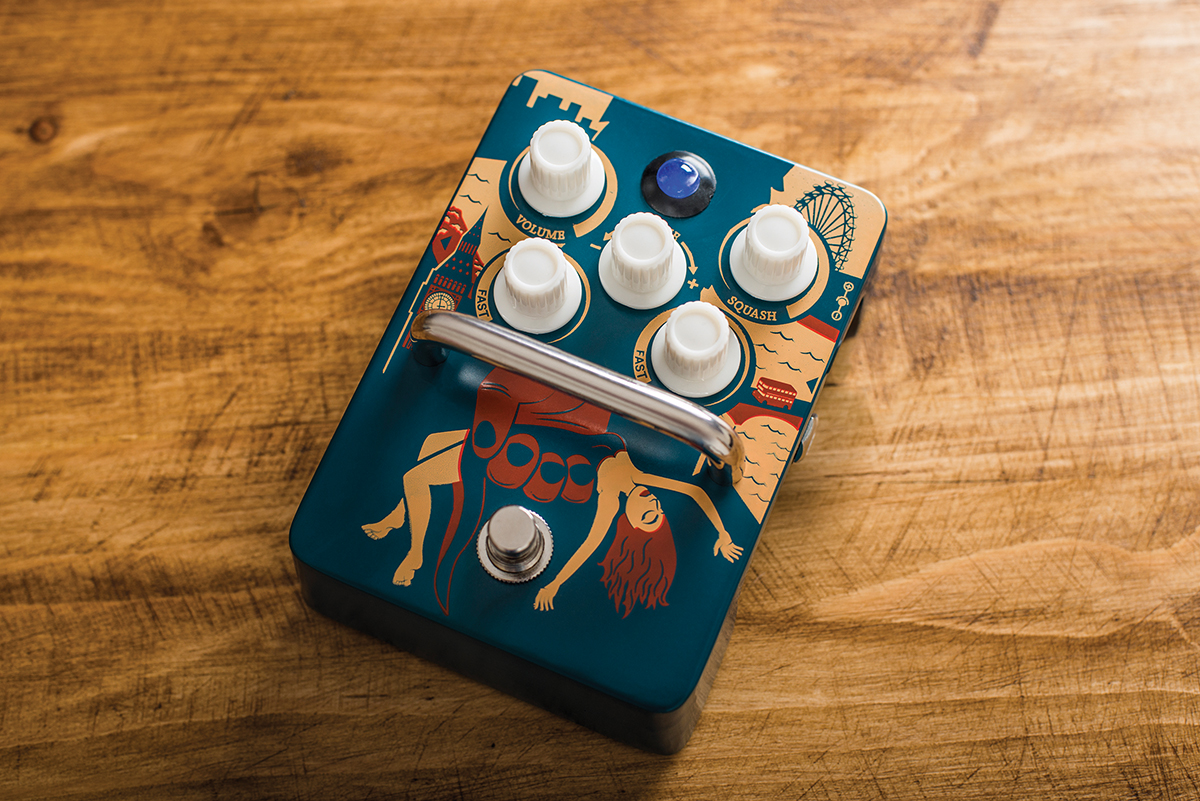
20. Orange Kongpressor
£119, orangeamps.com
Compressors can be handy for making things sound louder than they rare – which is good news if you’re actively looking to annoy people – but they can also restore a bit of life to an amp that you’ve had to turn down below its sweet spot. The Kongpressor is particularly good for this: as well as compressing in a natural way, it has a ‘chime’ control that’s perfect for adding sparkly treble to an unhappily flattened clean tone.
Preamp & amp-in-a-box pedals
Now we move on to specialist stompboxes that are designed to replace your rowdy old amplifier altogether… or at least the front half of it. For silent recording with amp-like tone, send the output straight to an audio interface; and when you are allowed to make a wee bit of noise, plug into your amp’s effects return or a standalone power amp.
21. Tech 21 Character Series
£219, tech21nyc.com
Tech 21 has been making amp-emulating stompers since 1989, when ‘digital’ just meant a watch without hands. Its current range of Character pedals covers every major amp type from both sides of the Atlantic, and each has a switchable speaker sim. Look out also for the Fly Rig 5 models, which combine the same analogue amp emulations with overdrive, reverb and delay.
22. Kingsley Constable
$375, kingsleyamplifiers.com
This is basically the preamp section of an old Marshall Plexi in a box that lives on the floor. It has two channels, one bright and one deep, that can be blended together just as you would with a real Plexi – and it’s a hand-wired circuit using a pair of 12AX7 valves. You can also flick a switch on the pedal to drop its output to normal stompbox level, turning this into a very high-class boost and low-gain overdrive.
23. Mooer Preamps
£94.99, mooeraudio.co.uk
Mooer makes affordable mini pedals that are often cheekily ‘inspired by’ famous designs – and, just in time to make this list, it recently launched a series of preamps. The prize for least subtle name in the range goes to the Two Stone, a tribute (if we really have to spell it out) to Two-Rock. Like the other models it has two channels, three-band EQ and switchable cab simulation.
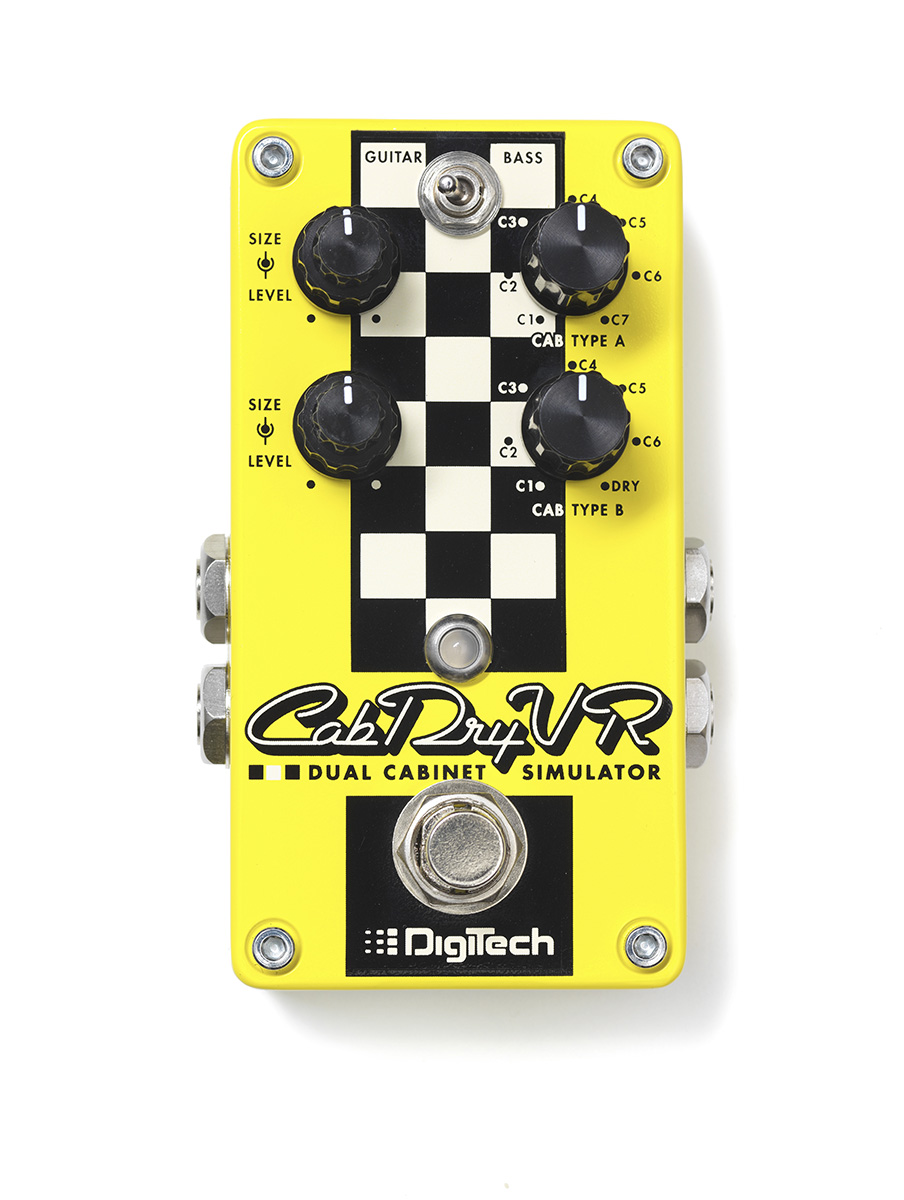
24. DigiTech CabDryVR
£129, digitech.com
Now this one’s a bit of an oddity, in that it simulates cabs but not amps – so it’s best used after a preamp (see above). You can then run the CabDryVR straight into a recording interface or mixer, and choose from its 14 tweakable impulse responses.
Part Three: Go digital
Right, so you’ve lobbed your 1957 Fender Deluxe into a skip and decided to dive into valve-free amplification. Here are the best places for you to start…
Lifestyle amps
Sorry, we couldn’t think of a less yucky name than ‘lifestyle’. These are digital practice amps designed to be versatile, portable and effective at home-friendly levels. They all have modern connectivity, built-in effects and headphone outputs – so the only thing likely to bother the rest of the household will be your embarrassing facial expressions.
25. Yamaha THR10 v2
£224, uk.yamaha.com
With its retro-radio looks, the diddy THR10 is in no danger of overpowering your next stadium crowd. But as a practice combo that’ll fit comfortably on a bookshelf, it’s a very tempting package. It offers a range of usable sounds, with an impressively wide stereo image and plenty of onboard effects to play with. There’s also a companion phone app for tweaking your tones.
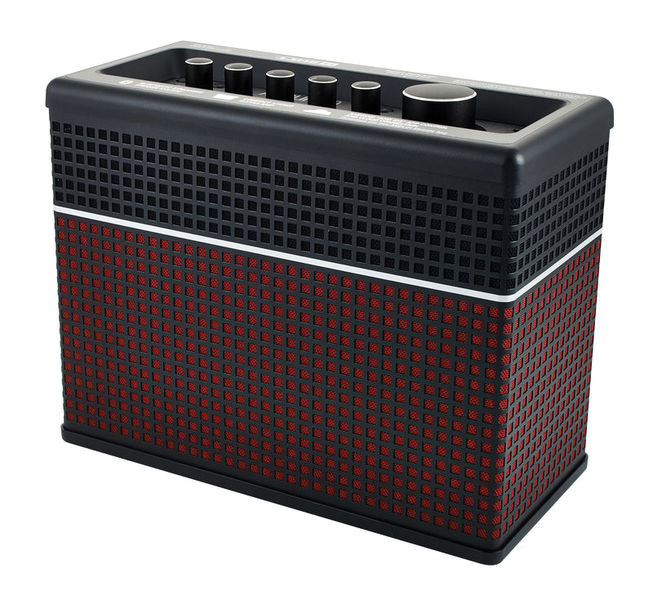
26. Line 6 AMPLIFi 30
£209, line6.com
The AMPLIFi 30 is such a discreet little black box you could almost mistake it for a Bluetooth speaker. Then again, it is a Bluetooth speaker. This lunchbox combo’s wireless smarts mean you can use it for home practice, DI recording via USB, listening to mp3s from your phone… or any combination of the above. You can even ask the app to dial in a sound to match the tones of the track you’re playing along to.

27. Fender Mustang GT 40
£195, fender.com
The new Mustang GT range includes a tasty 100-watter with a 12-inch Celestion speaker (£325), but this dinkier version – 40 watts through a pair of 6.5-inchers – is all you need for bedroom use. You get lots of presets controlled via the LCD screen or app, there’s a built-in looper, and it can download new sounds and firmware updates directly via wifi.
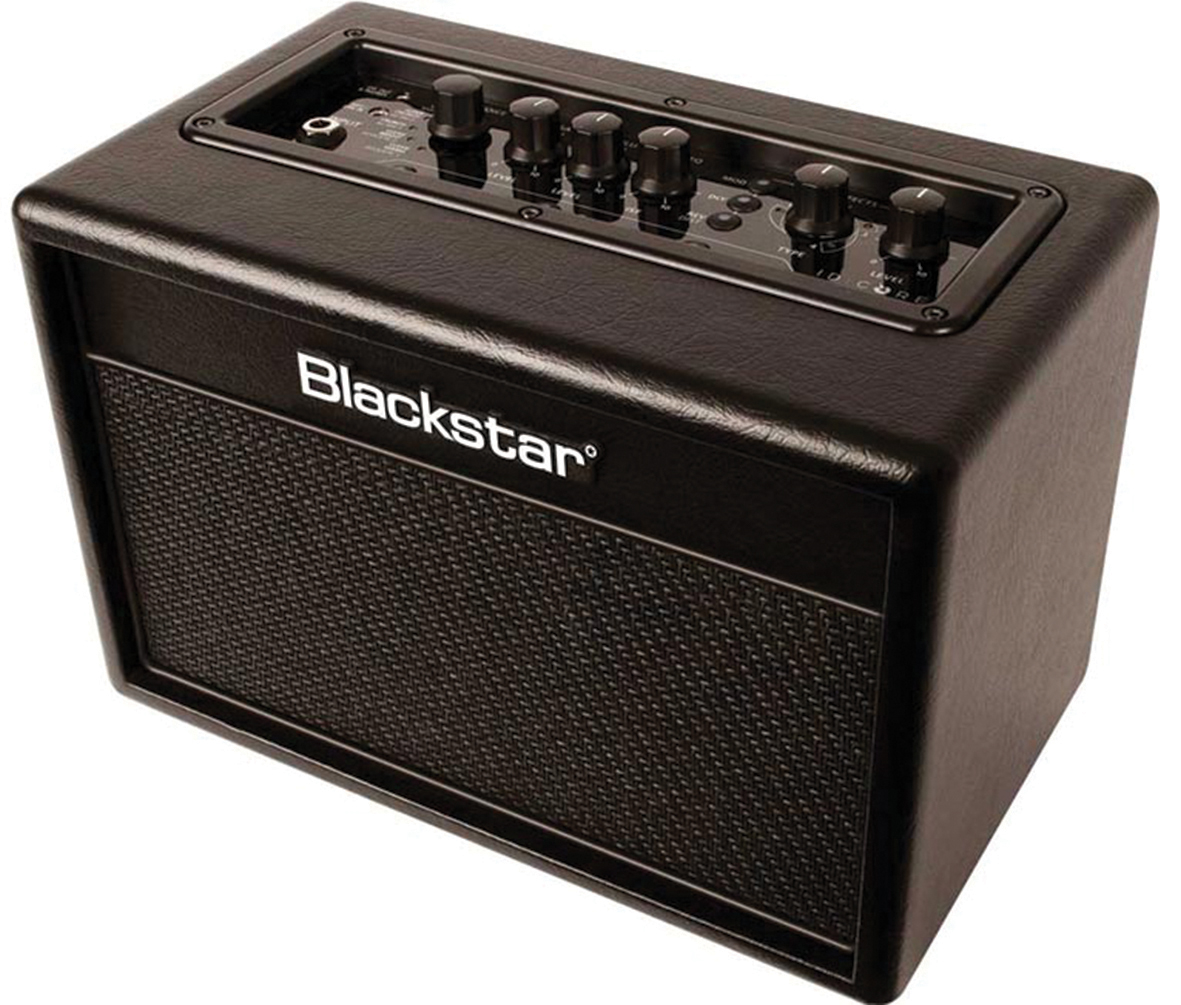
28. Blackstar ID:Core BEAM
£229, blackstaramps.com
Even the coffee machine at Blackstar’s offices probably has an ISF control – this patented US/UK character-shaping dial has become the company’s signature dish, and it’s just as effective on teeny amps like this as it is on the all-valve Artist and HT models. The ID:Core BEAM also offers Bluetooth streaming and has some cool stereo reverbs on board.
Go virtual
If you’re tech-savvy there are some wondrous apps that can turn your PC/Mac, tablet or smartphone into not just an amp but a whole collection of emulated classics, complete with effects. They’ll work as plug-ins for any major DAW.
First, though, we need to talk about hardware. For desktop recording you’ll need a low-latency USB interface with a guitar-friendly input – there are billions of the things, but a solid starting point would be the Focusrite Scarlett Solo (£95, focusrite.com). Looking to jam through a phone or tablet? Your options for iOS devices include the Apogee JAM (£99, apogeedigital.com), while Android users can now join in the fun with the iRig 2 (£35, ikmultimedia.com).
29. Native Instruments Guitar Rig 5 Pro
£169, native-instruments.com
Why are you running away? Ah, because Native Instruments is best known for making soft synths and samplers? Don’t worry – this desktop amp emulator is for guitarists only. You get 17 amps, 27 cabs, 54 effects and 16 microphones to choose from – and if you don’t fancy messing about with all that, you can just scroll through the 400 presets.

30. IK Multimedia AmpliTube
from €16.99, ikmultimedia.com
The software section of IK’s website has over 40 downloads for your Mac or PC, and the separate apps page has almost as many for your iPhone or iPad. So allow us to rescue your pinwheeling brain and focus on the basics: for desktop, AmpliTube 4 (€179.99) covers all the key bases and includes a multi-microphone ‘cab room’; and for mobile, you’ll probably want to start with the core AmpliTube app (€21.99).

31. Positive Grid Bias Amp
from €59, positivegrid.com
We recently reviewed Positive Grid’s 600-watt hardware amp, the Bias Head, and were especially impressed by its wide range of convincing rock and metal tones. That’s certainly an option for giggable power and silent playing in one box, but you can have access to all the same sounds via Positive Grid’s desktop and iOS app.
32. Peavey ReValver 4
$99.99, peavey.com
Plenty of virtual amps are letting you get into deep editing these days, but ReValver was the one that introduced us to the joys of tampering with everything from speakers and effects to rectifier valves, output transformers and coupling capacitor frequencies. And you don’t have to actually understand any of it!
33. Apple Amp Designer
£free, apple.com
This is the free package that comes with Logic and GarageBand – but while it’s pretty great, the wider point here is that you shouldn’t overlook the built-in amps of whatever DAW you use, even if you’re just noodling rather than recording. Amp Designer offers plenty of fine control over your tone, and the virtual stompboxes are a lot of fun, too.
High-end modellers
The main reason for using a modelling device instead of a real valve amp has nothing to do with loudness – it’s all about flexibility. Why settle for a single amp when you can have dozens of ’em in one box, with effects included? The obvious benefit for the purposes of this feature, though, is that you can enjoy all those sounds without having to disturb the dust on any real speakers. And, of course, they’re a lot more giggable than software amps.

34. Kemper Profiler Head
€1,705, kemper-amps.com
The headline feature with the Kemper is profiling – you can use it to capture and emulate the sonic profile of any amp it hears – and the results are convincing enough for the likes of Muse’s Matt Bellamy and Biffy Clyro’s Simon Neil, both of whom have used Kempers live. It has hundreds of tones already installed, there are thousands more online, and if you want to play through a real cab, there’s a 600-watt powered version (€2,110).
35. Fractal Axe-Fx II XL+
€2,699, fractalaudio.com
Fractal describes this rackmount unit as ‘the world’s most powerful all-in-one guitar processor’ and for this price you’d hope so! You’re paying for ultra-beefy digital processing as well as flexible connectivity options, Kemper-style ‘tone matching’ and over 180 amp plus 150 speaker sims and effects.
36. Line 6 Helix LT
£852, line6.com
The LT should stand for Lovely & Tidy, because this stripped-down version of the Helix is a neat piece of kit. It has the same formidable processing tech, but with more basic connectivity and a more tempting price. Key features include 62 amps, 104 effects, a big LCD screen, and component editing.
Part Three: The best of the rest
Finally, some ‘lateral thinking’ options that don’t fit into any of the other categories but could prove just as useful in your quest for a bit of hush…
Make your guitar quieter
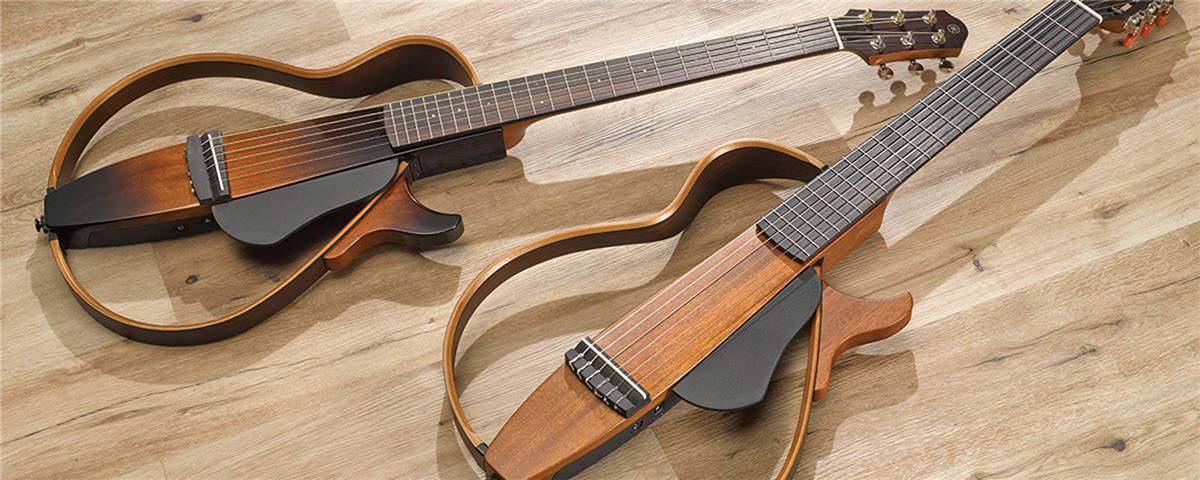
37. Yamaha SLG200S Silent Guitar
£488, uk.yamaha.com
If your pet capybara’s just nodded off in the next room, even going unplugged might not be quiet enough. Here’s Yamaha’s answer. Acoustically its lack of a resonant body keeps things (almost) silent, while the SLG200S emulates a normal acoustic through its line out and headphone sockets.
38. The treble bleed mod
£4.32, axesrus.co.uk
Simply turning down your guitar’s volume control is the quickest (and crudest) fix of all, but it can make your tone duller as well, for reasons to do with potentiometer resistance. There are loads of kits available for getting around this, and all they involve is one capacitor and one resistor to solder across the volume pot.
Make the room quieter
39. Randall ISO 12
€479, randallamplifiers.com
So we move from the very beginning of the signal chain – the guitar – to the very end. There are plenty of isolation cabs on the market, including this popular model from Randall, or, DIY skills permitting, you could always knock one up yourself out of wood and acoustic foam. It’s got to be more effective than building a frame of old mic stands around your amp and covering it in stinky duvets.

40. Acoustic absorption foam
from £14/panel, auralex.com
Those bumpy panels on studio walls are designed for the people inside, not their neighbours – they absorb reflections to make a room less echoey. But less noise swirling around means less noise to bother anyone else, doesn’t it? If that’s not enough, Auralex also sells sound insulation materials for walls, ceilings and floors.
